Submitted by WA Contents
Coop Himmelb(l)au unveils design for "a memorable and unmistakable" tower for Southbank By Beulah
Australia Architecture News - Jul 30, 2018 - 23:34 33711 views
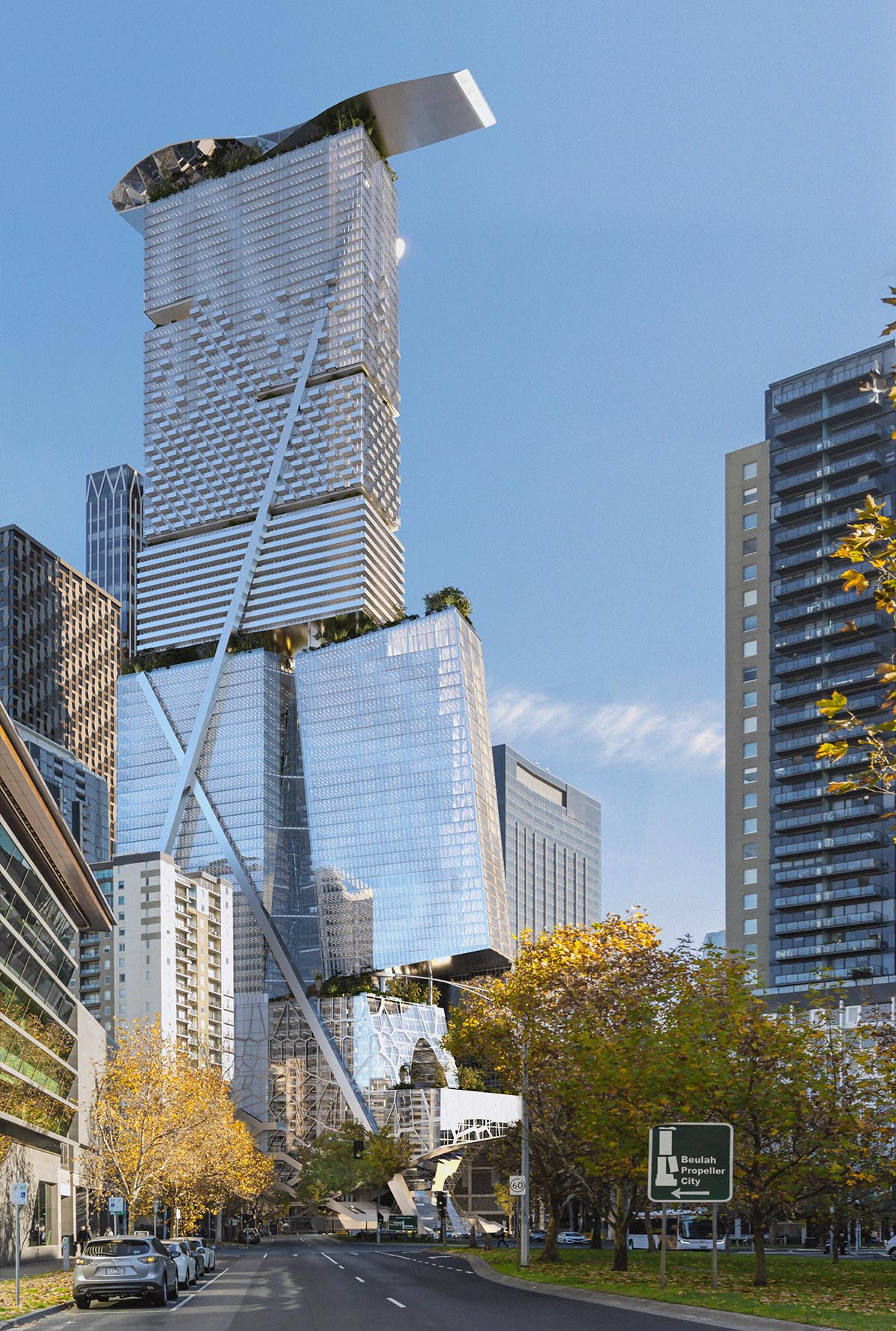
Wolf D. Prix's firm Coop Himmelb(l)au has released its design in detail for the Southbank By Beulah tower competition, the competition seeks for the best proposal at 118 City Road in Southbank, Melbourne.
"More than a tower, its time to design a new typology for a highrise," said Wolf D. Prix for his proposal.
Coop Himmelb(l)au, in collaboration with Architectus, is on the strong shortlist among other international firms, including Bjarke Ingels Group, MVRDV, MAD, OMA and UNStudio.
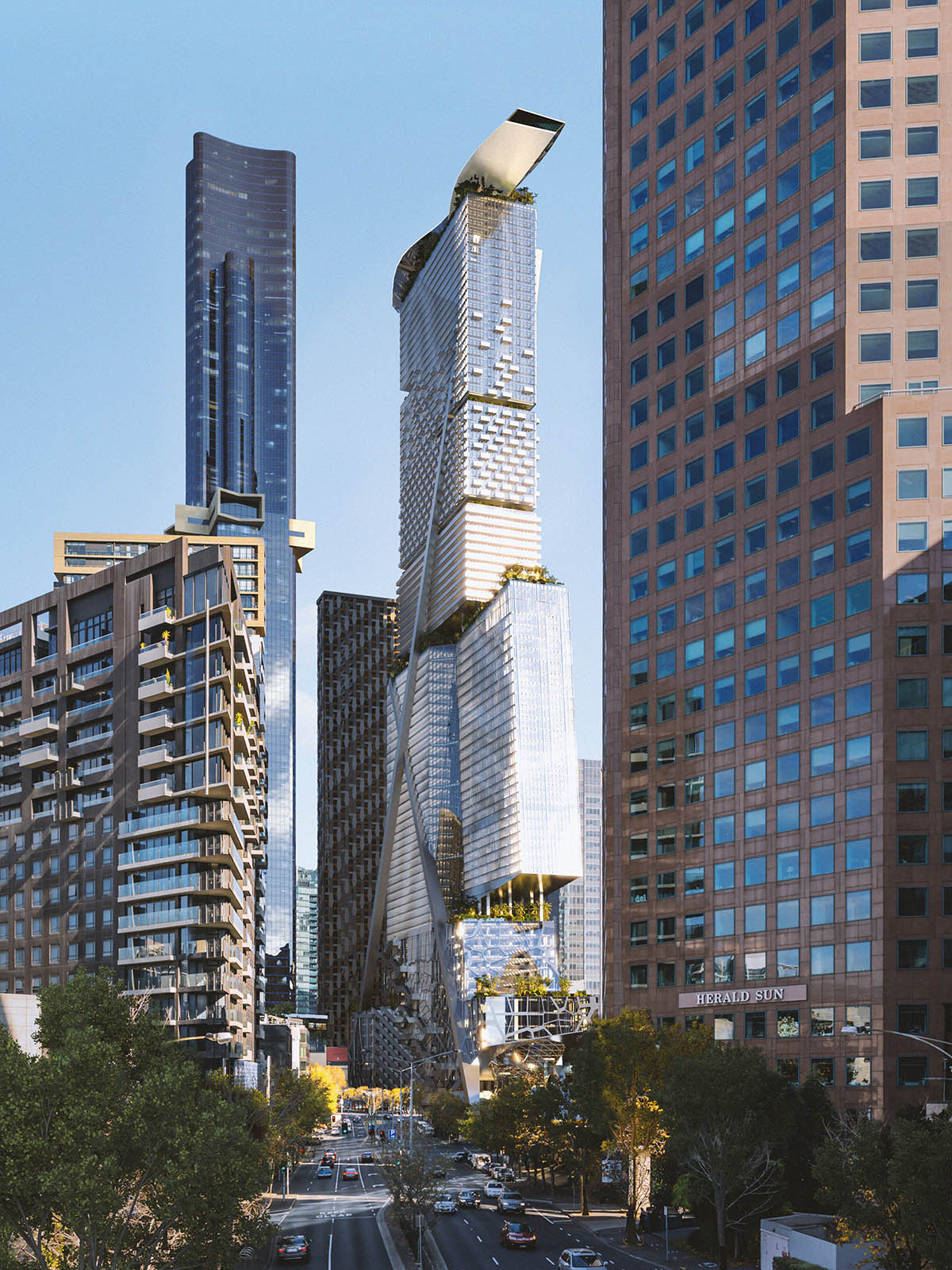
Coop Himmelb(l)au's proposal aims to redefine a new type of high-rise with a dramatic silhouette in Melbourne. Located in the heart of Melbourne’s primary arts and entertainment precinct, once selected, the studio's proposal will be an architectural landmark that redefines the residential, commercial, retail and public open-space environments of Melbourne.
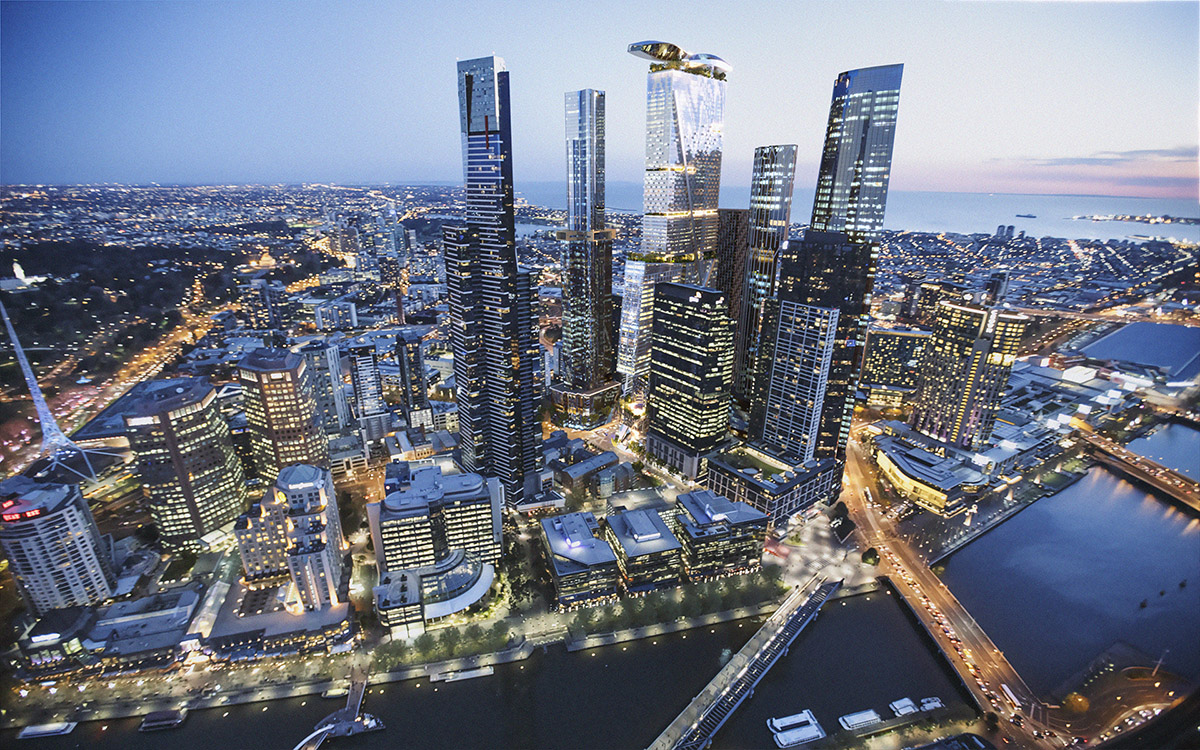
Composed of different volumetric parts and intertwined each other, the new tower will reflect the vitality and creativity of the city, becoming a destination for local, national and international visitors.
The $2 billion competition is seeking the best project that fits to the site and proposes a new mixed-use lifestyle precinct of over 220,000-square-metre with 23,000-square-metre of public programs. The proposed project will include luxury apartments, commercial offices, 5 star hotel, an entertainment centre, technological display centres (including BMW Experience Centre), world class retail, cultural precinct and public green spaces.
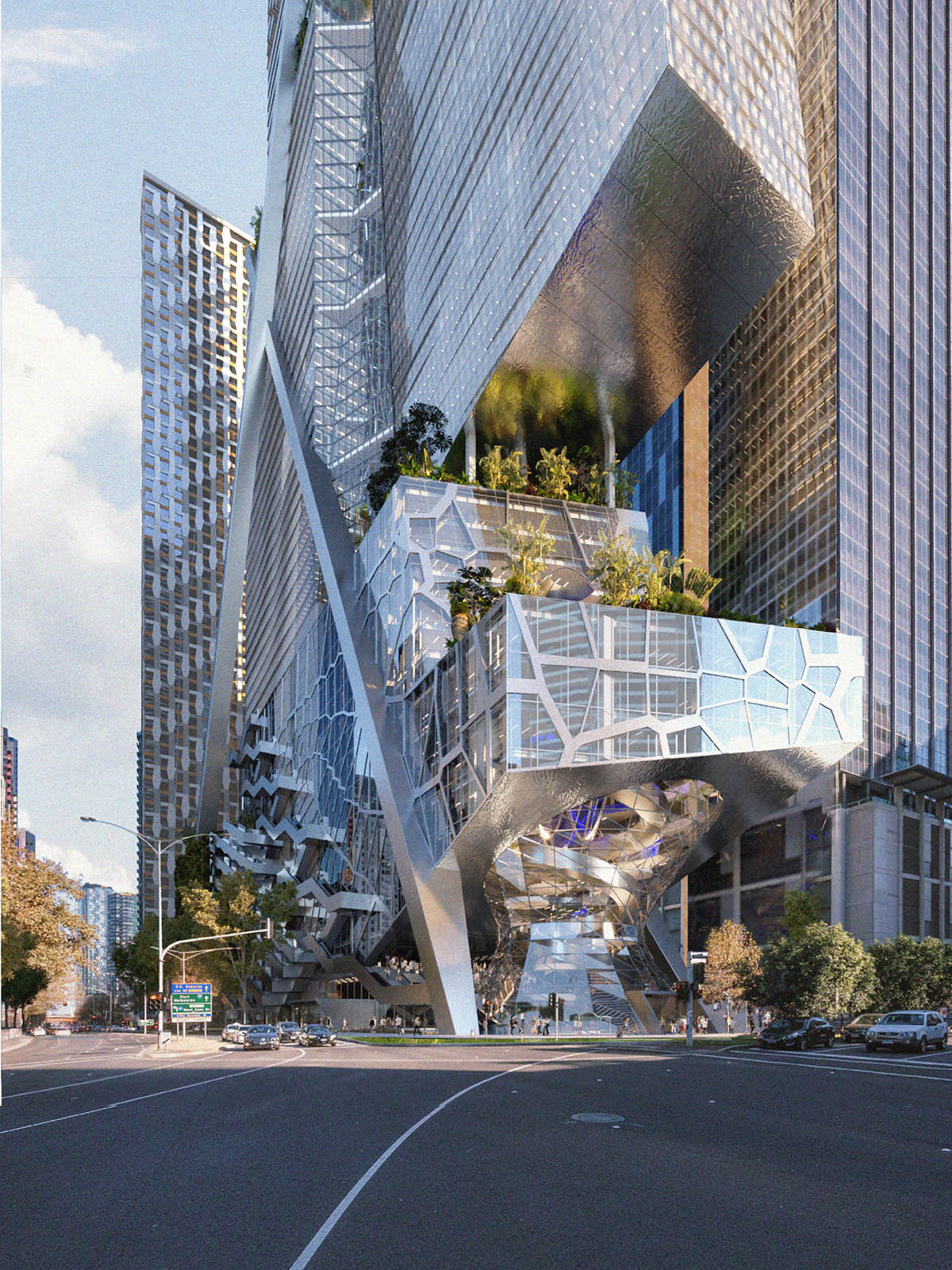
"Our vision for Beulah Propeller City is the creation of a vertical city composed of multiple functions intertwined in a fluid gesture of vertically linked public spaces," said the firm.
"The "Gestalt” of the structural, material and functional components of the design will create a memorable and unmistakable icon in the city-scape."
The project will represent a new form of urban development for Melbourne; the lively, mixed-use, vertical city.
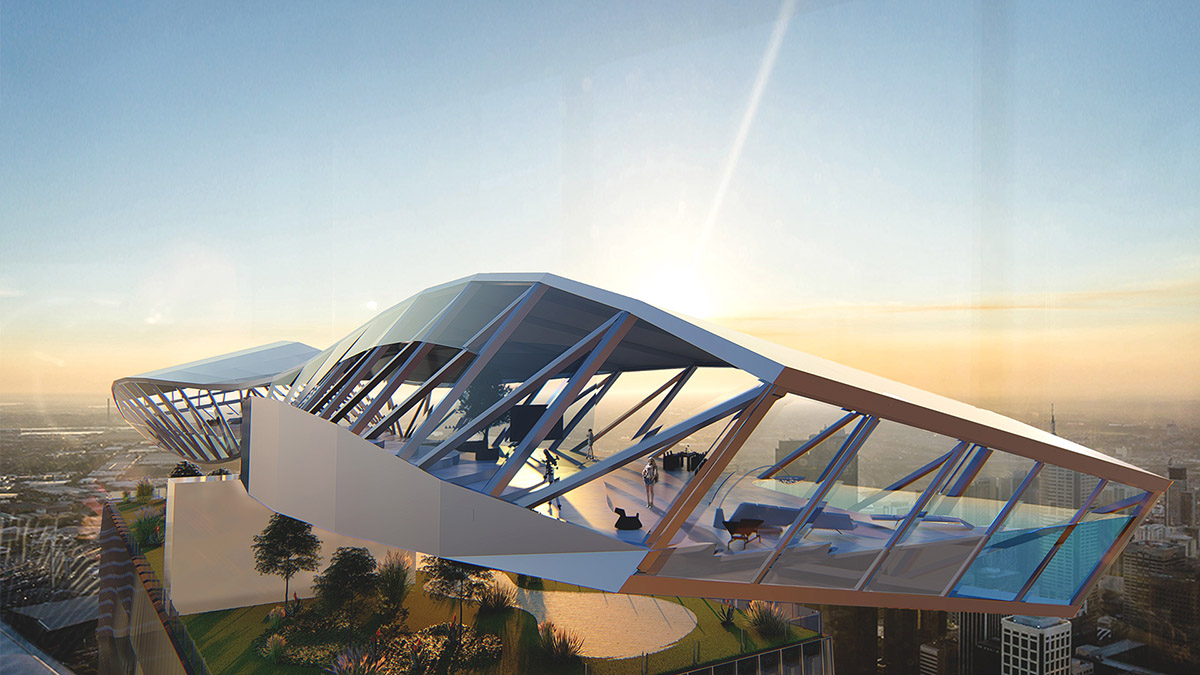
"We approached the design of the building form as an artist would a sculpture. The maximum possible building envelope was the starting block; the client’s brief, planning regulations, the existing urban form, climate and views to and from site were considerations which prompted the specific carves and manipulations to reveal the dynamic urban figure within," added the firm.

The studio's hybrid vertical city creates both relationships and fields of tension with the surrounding urban structure; mediating and connecting with the urban fabric it establishes a new urban paradigm for this inspiring location in Melbourne.

The building design creates different districts to suit the principal functions. The interfaces between these areas promote and facilitate connections and sharing. This creates readability and the possibility of identification.
Coop Himmelb(l)au expands the concept of "public benefits", which in the traditional sense generates the creation of a multifunctional building, and the architects create real public spaces within a multifunctional structure.

All free spaces are created within the interstices of the main building elements: atria, terraces, community facilities and amenity spaces such as recreational and public areas for leisure, pleasure and circulation.

These free spaces provide orientation for the people who use and live in the building and enable personal interaction such that communities are formed. This approach circumvents the isolation that frequently occurs with disconnected levels.
The result of this approach is a unified composition of identifiable building elements comprising low, mid and high-rise volumes created by dividing the program of the building into its four main functional parts; public podium, office, hotel and apartment tower.
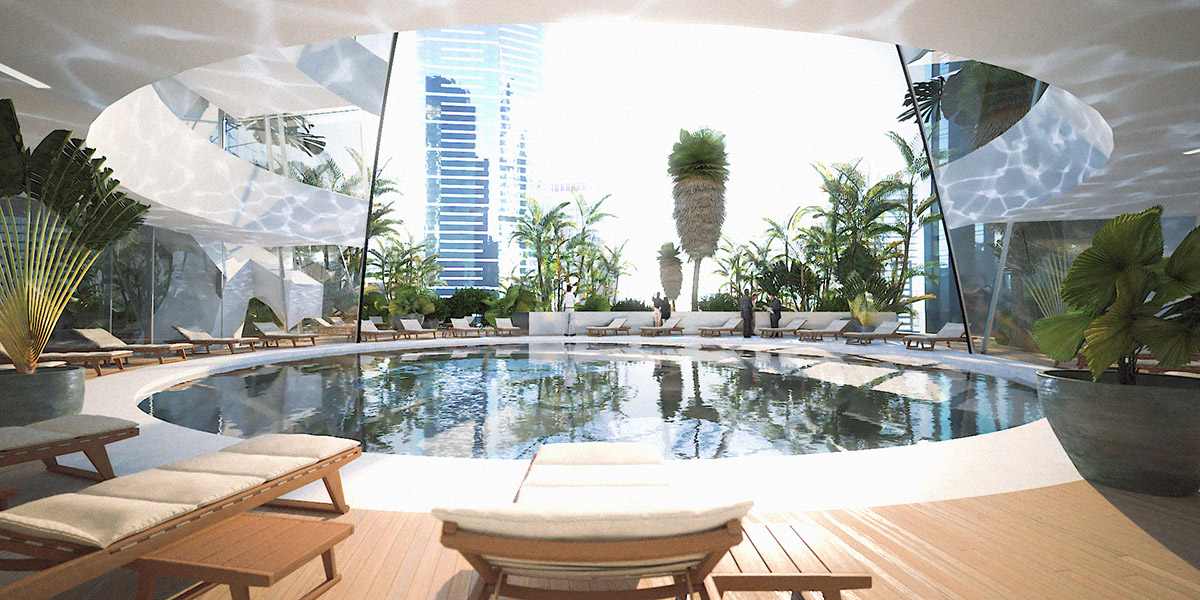
Through the design of the external primary structure, the internal construction elements are optimized and reduced thereby enabling maximum flexibility for current uses as well as eventual adaptability in the future.

This structure for future adaptability is a primary expression of the architectural design. Formal decomposition articulating the various programmatic elements defines the new high-rise typology and ultimately serves to make each functional element feel more intimate.
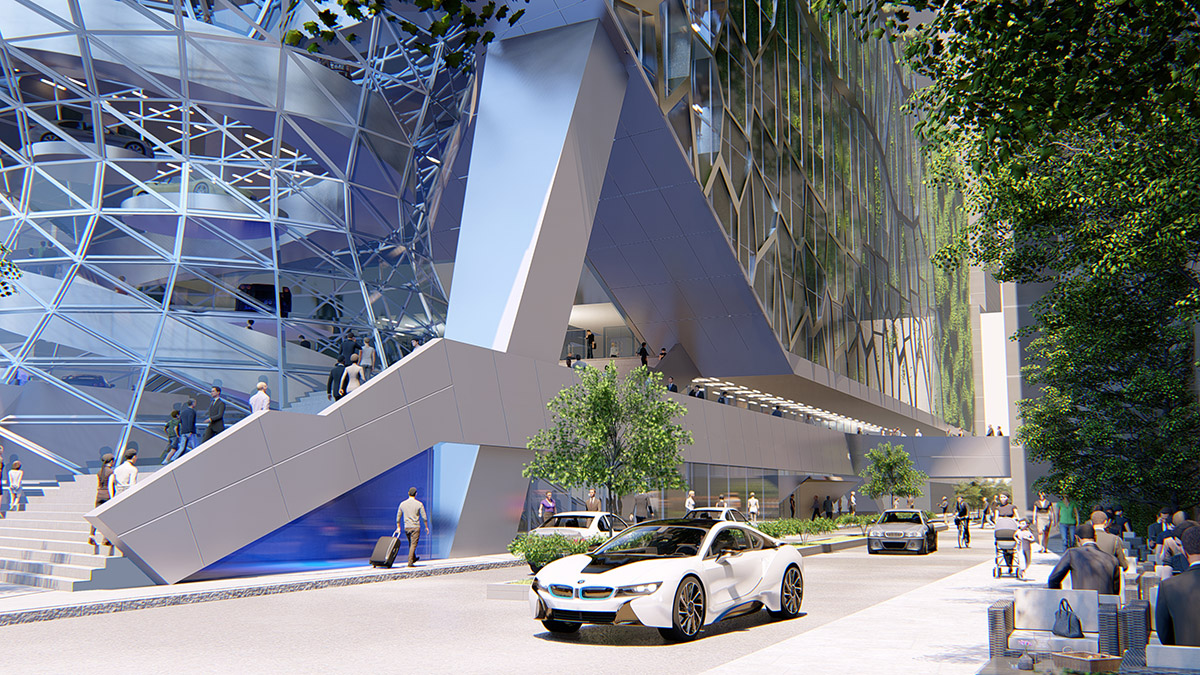
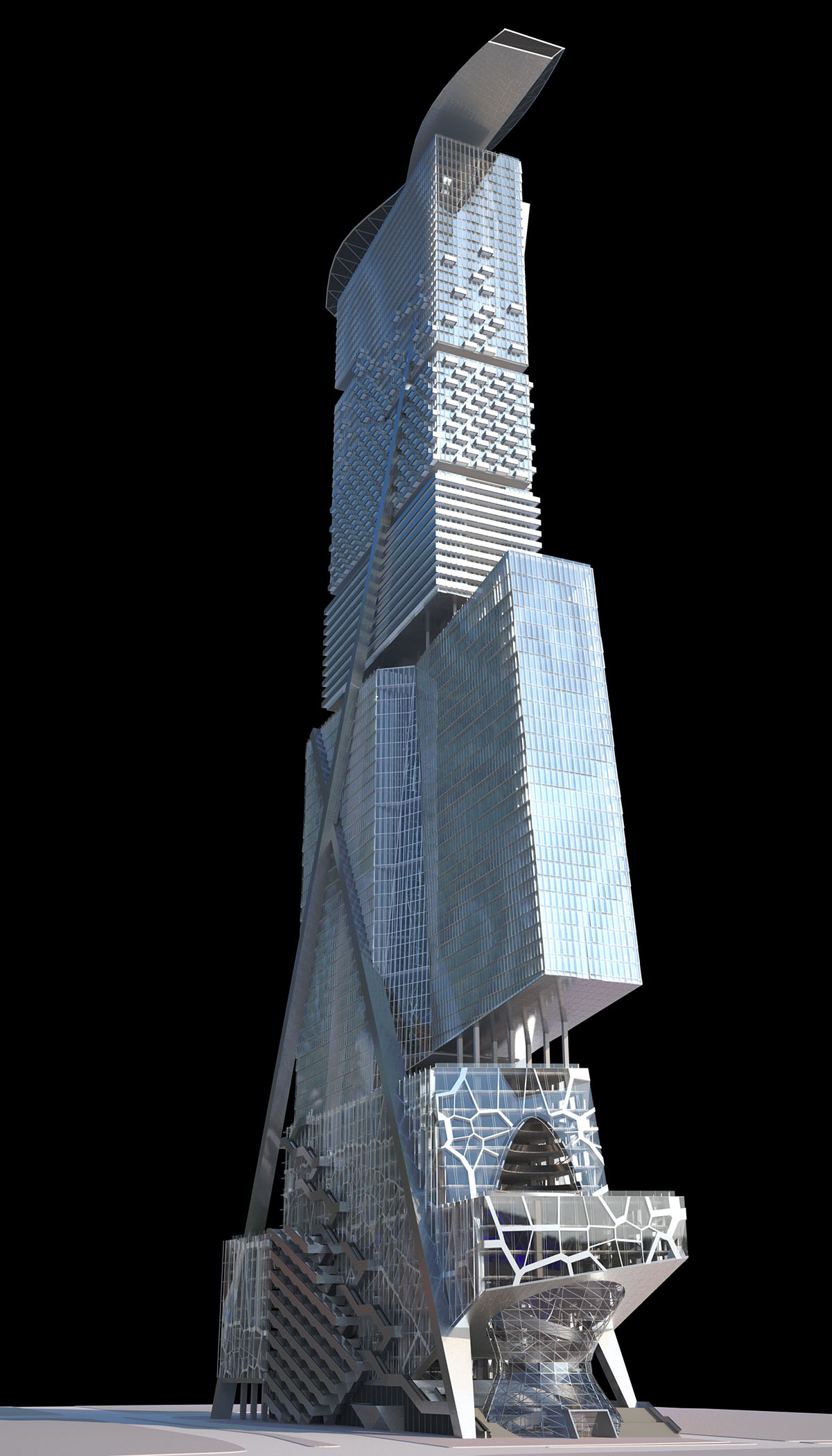
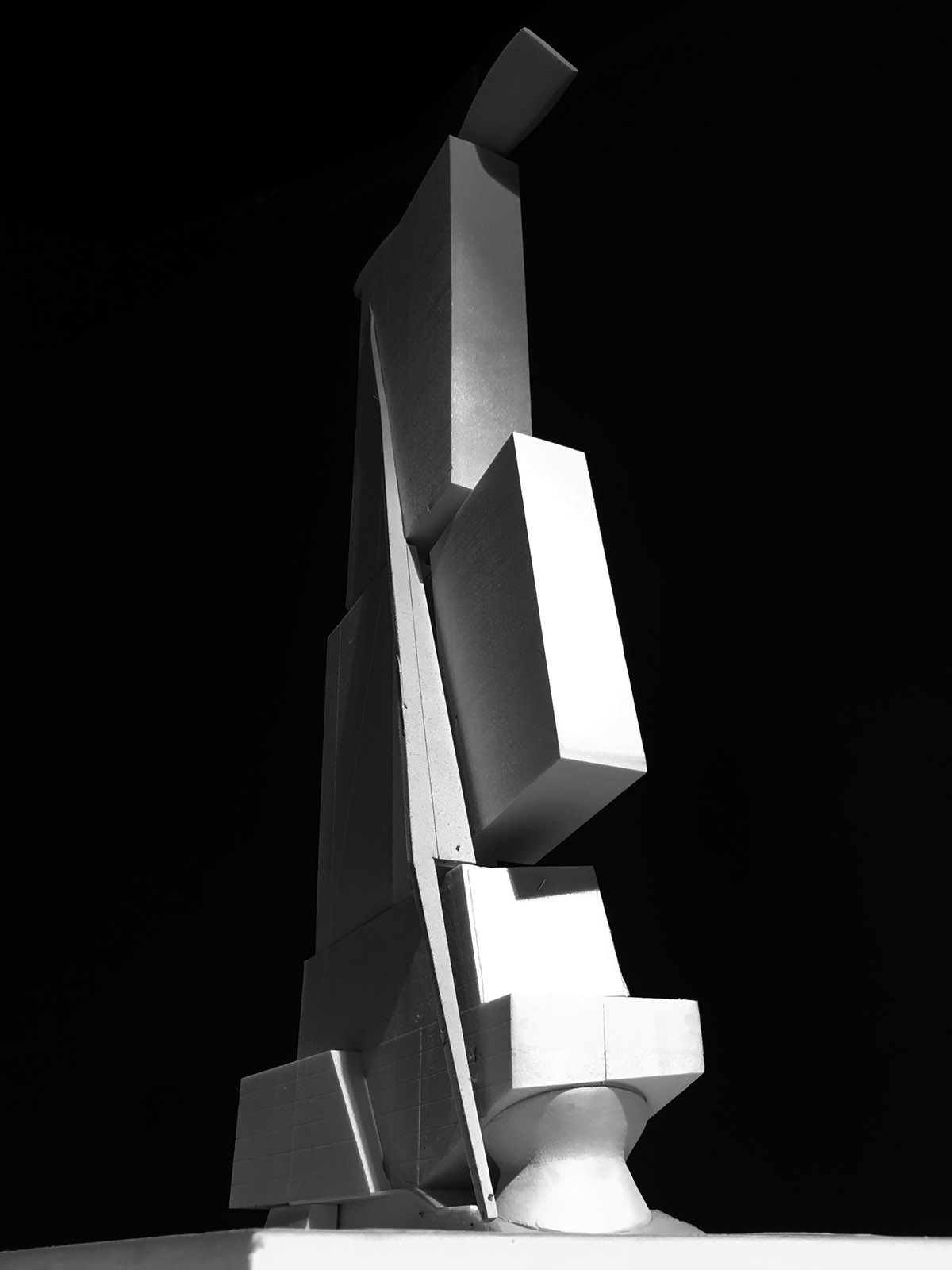


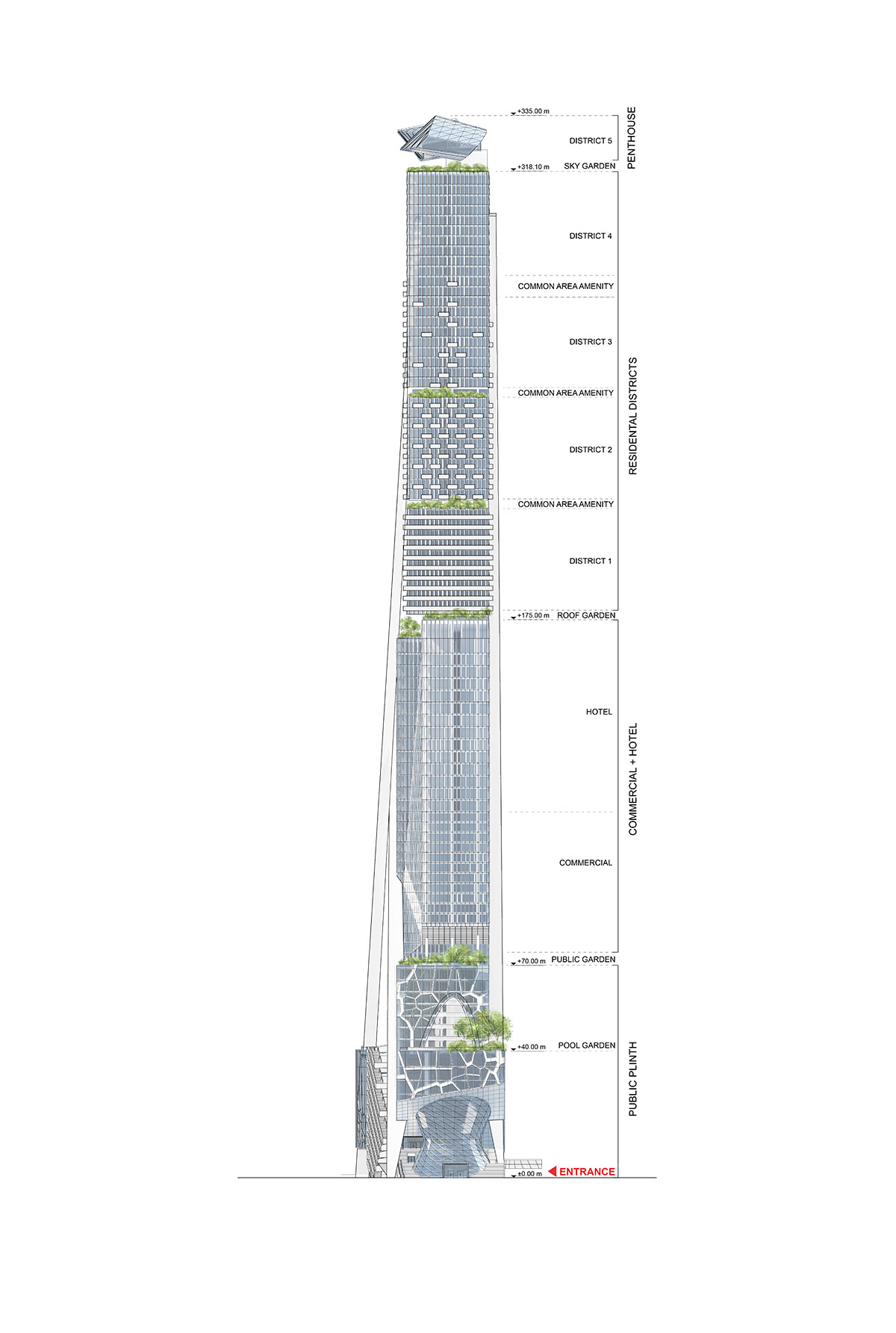
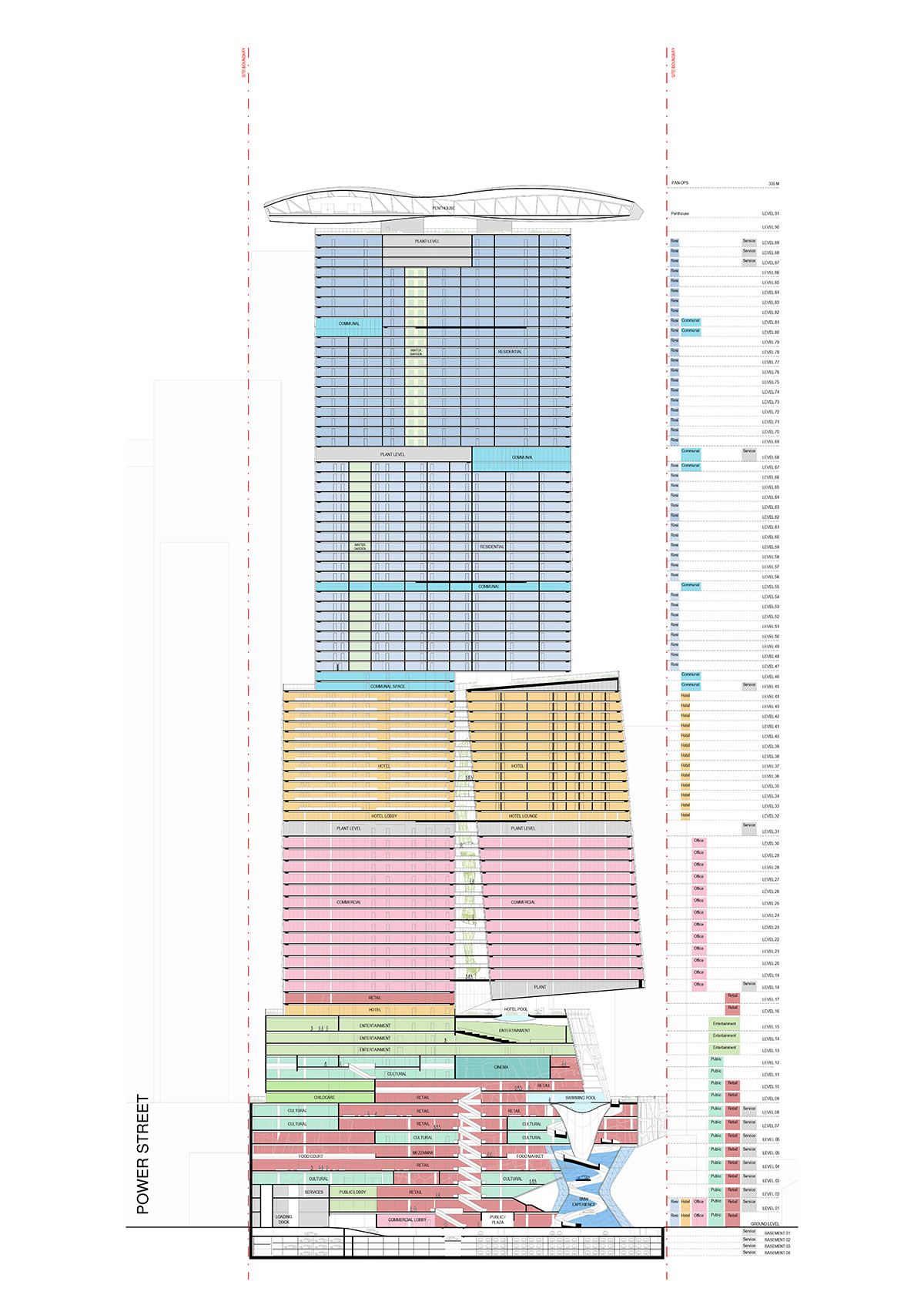
The proposed schemes are on display at the Beulah Pavilion in Melbourne until August 1, 2018. The winner of the competition will be announced on August 8th, 2018.
Project facts
Client: Beulah International
Planning: Coop Himmelb(l)au Wolf D. Prix & Partner ZT GmbH
Local Partner: Architectus
Principal in Charge: Wolf D. Prix
Project Partners: Markus Prossnigg
Design Architect: Alexander Ott
Project Architects: Benjamin Schmidt
Project Team Vienna: Biernat Paul, Bolojan Daniel, Popovic Vasja, Shir Katz, Konstantinos Papachristopoulos, Coskun Irem, Feil Marco, Pu Yuan, Stievenard Valentin, Rancke Jan, La Chi Nam, Parleva Denitsa
Structural Engineering: B+G Ingenieure, Bollinger und Grohmann GmbH
Urban Planning: Ethos Urban
Engineering/Structural Design/MEP: ARUP
Energy Design: Brian Cody
Placemaking: Village Well
Landscape: TCL
Retail: Benoy
Cultural Consultant: Timmah Ball
Urban Art: UAP
Wayfinding: Büro North
Cost Management: Rider Levett Bucknall
Building Surveyor: du Chateau Chun
All images courtesy of Coop Himmelb(l)au Wolf D. Prix & Partner
> via Coop Himmelb(l)au
